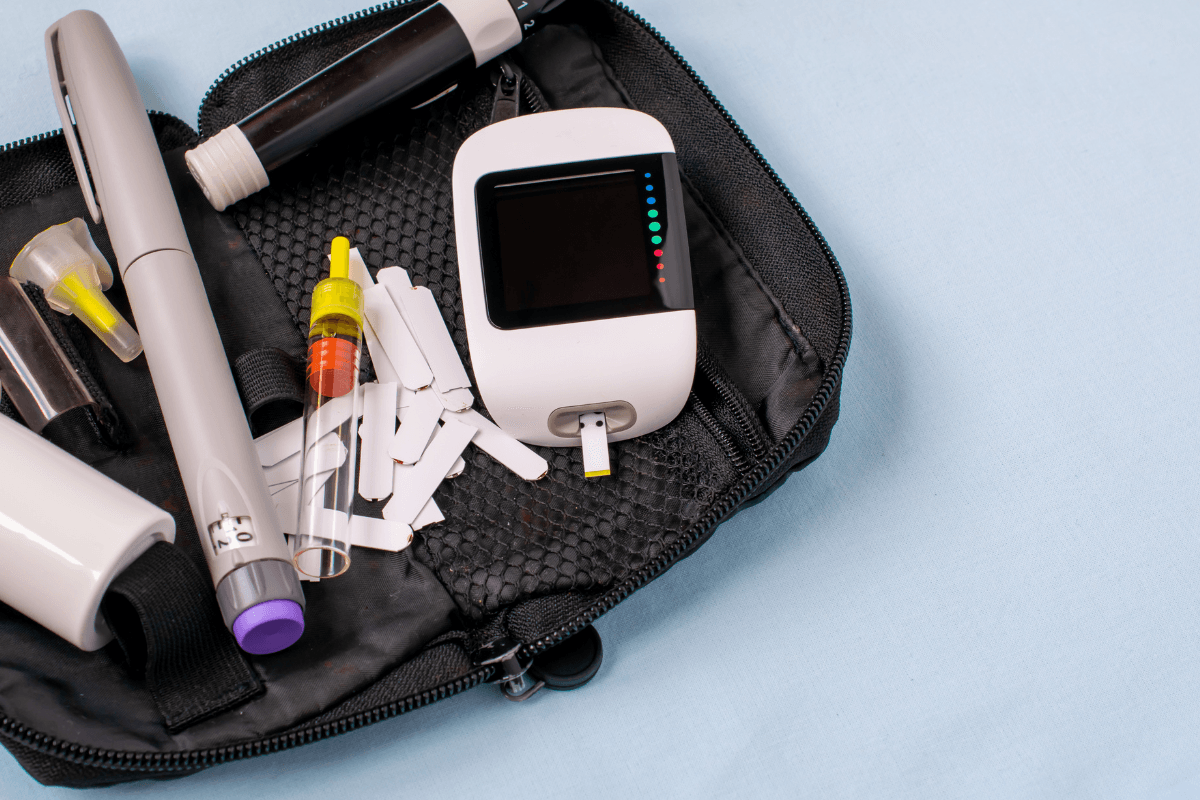Insulin is a lifesaving medication for individuals with diabetes, ensuring blood sugar levels stay within a healthy range. However, the effectiveness of insulin heavily depends on proper insulin storage and handling. Many overlook the importance of maintaining correct storage conditions, which can lead to reduced potency, poor glycemic control, and even health complications.
This article explores the hidden dangers of improper storage of insulin, highlights the significance of storing insulin safely, and provides actionable tips for proper insulin handling to avoid unnecessary risks.
The Importance of Proper Insulin Storage
Insulin is a temperature-sensitive medication that requires specific storage conditions to maintain its effectiveness. Both excessive heat and extreme cold can degrade insulin, rendering it less effective in regulating blood sugar levels.
When insulin is exposed to improper storage conditions, it may lose its potency without visible signs of damage. This can result in inadequate glucose control, putting patients at risk of complications such as hyperglycemia or hypoglycemia. Understanding and adhering to proper storage of insulin guidelines is crucial to ensuring the medication works as intended.
Common Mistakes in Handling Insulin
Despite its importance, improper storage of insulin is a common issue. Here are some frequent mistakes that compromise its effectiveness:
1. Exposure to Extreme Temperatures
One of the most significant dangers to insulin is exposure to temperatures outside the recommended range of 36°F to 46°F (2°C to 8°C) for unopened vials or pens. If left in a hot car or stored in a freezing environment, insulin can break down, leading to diminished potency.
2. Storing Insulin in Direct Sunlight
Direct sunlight can rapidly increase the temperature of insulin, especially if stored near a window or in a bag exposed to the sun. Over time, this exposure can lead to degradation.
3. Improper Handling During Travel
Travel poses unique challenges for handling insulin. Without proper precautions, insulin can be exposed to fluctuating temperatures, particularly during flights or long road trips. Using an insulated travel bag can help ensure consistent temperature control.
4. Refrigerating Insulin Incorrectly
While insulin needs to be refrigerated before it is opened, freezing insulin can render it completely unusable. Additionally, storing insulin in the refrigerator door can expose it to temperature fluctuations each time the door opens.
The Risks of Improper Insulin Handling
Improper handling can be as detrimental as poor storage. Mishandling insulin can compromise its effectiveness and lead to adverse outcomes.
Insulin Potency Risks
Compromised insulin potency means it may not effectively lower blood sugar levels. This can result in poor diabetes control, increasing the risk of complications like diabetic ketoacidosis or long-term organ damage.
Contamination Risks
Failing to use clean syringes or handling insulin with unwashed hands can lead to contamination, increasing the risk of infections. Proper hygiene is a critical component of handling insulin safely.
Mechanical Damage
Insulin pens and vials are sensitive to physical impact. Dropping them can lead to cracks or leaks, rendering the insulin unusable. Always inspect insulin containers for damage before use.
How to Store Insulin Safely
Taking the right precautions can help ensure your insulin remains effective. Here are essential tips for storing insulin safely:
1. Use an Insulated Travel Bag
When traveling, always store your insulin in an insulated bag with cooling packs to maintain the appropriate temperature. Ensure the packs do not freeze the insulin.
2. Avoid Temperature Extremes
Store insulin in a location that maintains a consistent temperature, away from heaters, direct sunlight, or freezers. A dedicated spot in your refrigerator is ideal for unopened insulin.
3. Monitor Storage Conditions
Use a thermometer to check the temperature of your refrigerator or storage area. Keeping a log can help ensure conditions remain within the safe range.
4. Follow Manufacturer Guidelines
Always follow the storage instructions provided on the insulin packaging or by your healthcare provider. Different types of insulin may have slightly different storage requirements.
Recognizing the Signs of Compromised Insulin
Even with careful handling and storage, insulin can sometimes lose its potency or become compromised. Identifying these issues early is essential to avoid disruptions in blood sugar management and prevent potential health risks.
By staying vigilant and knowing what to look for, you can ensure your insulin remains effective.
Changes in Appearance
Insulin should always appear clear and free of particles, especially for rapid-acting and long-acting analogs. If you notice cloudiness, discoloration, or the presence of clumps in clear insulin, it should not be used. For cloudy insulin types, such as NPH, any unexpected changes in texture, consistency, or separation could indicate that it has been compromised.
Unexpected Glucose Fluctuations
If your blood sugar levels become unusually high or difficult to stabilize despite proper dosing, it may signal that your insulin has lost its effectiveness. This can happen if the insulin has been exposed to extreme temperatures or has passed its expiration date. In such situations, consult your healthcare provider to determine the next steps and avoid potential complications.
Physical Damage to Containers
Inspect insulin vials, pens, or cartridges for any signs of physical damage, such as cracks, leaks, or compromised seals. Even minor damage can expose insulin to contaminants or environmental factors that reduce its efficacy. Always store your insulin properly and handle it with care to minimize the risk of damage.
Staying attentive to these signs and taking action promptly ensures that your diabetes management remains effective, safeguarding your health and well-being.
Takeaways
Proper insulin storage and handling are essential for maintaining the medication’s effectiveness and ensuring optimal diabetes management. Improper storing of insulin safely can lead to diminished potency, contamination, and poor blood sugar control, which increases the risk of complications.
By understanding the risks associated with improper insulin handling, adhering to best practices, and monitoring for signs of compromised insulin, individuals can safeguard their health and prevent unnecessary challenges. Prioritize proper insulin handling to ensure your insulin remains effective and reliable in managing diabetes.
Frequently Asked Questions (FAQs)
What is the ideal temperature for insulin?
Insulin should be stored at 36°F to 46°F (2°C to 8°C) before opening. Once opened, it can be kept at room temperature (below 77°F or 25°C) for up to 28 days, depending on the type.
Can I use insulin that has been frozen?
No, frozen insulin loses its effectiveness and should not be used. Always check storage conditions to avoid freezing.
How can I safely store insulin during travel?
Use an insulated travel bag with cooling packs to maintain a consistent temperature. Avoid direct exposure to sunlight and monitor conditions during your trip.


